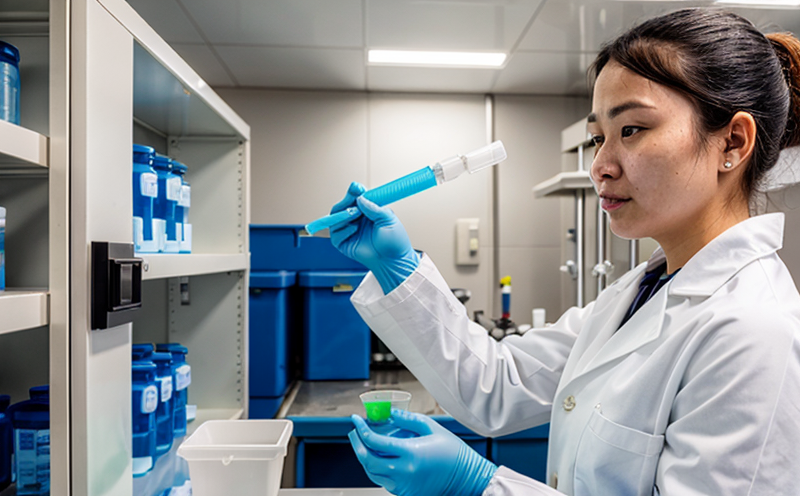USP Minimum Bactericidal Concentration Testing
The USP Minimum Bactericidal Concentration (MBC) testing is a critical procedure within pharmaceutical development and manufacturing. This test determines the lowest concentration of an antimicrobial agent that will kill all viable bacteria present in a sample, thereby providing assurance of sterilization or disinfection effectiveness.
This testing is particularly important for ensuring the safety and efficacy of pharmaceutical products, especially those intended to be sterile. Compliance with USP MBC ensures that medical devices, solutions, and other products meet stringent sterility requirements set by regulatory bodies such as the FDA (Food and Drug Administration).
The procedure involves inoculating a known quantity of test bacteria onto agar plates and exposing them to progressively decreasing concentrations of the antimicrobial agent. After incubation, the lowest concentration at which no visible growth is observed is considered the MBC. This result provides valuable information for optimizing sterilization processes, validating disinfection protocols, and ensuring product safety.
The USP MBC test follows strict guidelines outlined in the United States Pharmacopoeia, specifically Standard 71: Sterility Testing and USP : Antimicrobial Agents. These standards provide a framework for accurate and reliable testing, ensuring that results are consistent across different laboratories.
The process begins with careful preparation of the bacterial inoculum, often using reference strains like Escherichia coli or Staphylococcus aureus as per USP specifications. The test solution is then diluted into appropriate concentrations, typically ranging from 1:2 to 1:100. Each dilution is applied to agar plates, which are incubated under conditions that favor bacterial growth.
After incubation periods specified in the USP (typically 48 hours for most bacteria), the results are visually inspected for any signs of growth. If no growth is observed at a particular concentration, that concentration is recorded as the MBC. For more stringent requirements, multiple replicates may be conducted to ensure accuracy.
The MBC test is essential in various stages of pharmaceutical development and manufacturing:
- Validation of sterilization processes for medical devices
- Determining effective concentrations of antimicrobial agents used in sterile products
- Evaluating the efficacy of disinfectants on surfaces or packaging materials
- Optimizing cleaning protocols to prevent contamination during manufacturing
The accuracy and reliability of MBC testing are paramount, as even small variations can lead to significant discrepancies in product safety. Therefore, it is crucial that the laboratory performing these tests adheres strictly to USP guidelines, ensuring that all steps from sample preparation to final result interpretation are meticulously followed.
Given the critical nature of this test, accurate and reliable results are essential for maintaining compliance with regulatory standards. This ensures not only product safety but also protects manufacturers against potential recalls or legal actions stemming from contaminated products.
Benefits
- Ensures compliance with USP and FDA regulations, enhancing product safety and efficacy
- Provides valuable data for optimizing sterilization processes and disinfection protocols
- Reduces the risk of contamination in medical devices and sterile products
- Supports the validation of new formulations and processes
- Aids in identifying the most effective antimicrobial agents for specific applications
- Facilitates the development of robust quality assurance programs within pharmaceutical companies
- Improves overall product reliability and reduces potential recalls or market withdrawals
Industry Applications
| Application | Description |
|---|---|
| MEDICAL DEVICES | Determining the minimum concentration of antimicrobial agents required to achieve sterility during device sterilization processes. |
| BIOLOGICAL PHARMACEUTICALS | Evaluating the effectiveness of disinfectants used in manufacturing facilities to prevent contamination. |
| STERILE SOLUTIONS | Ensuring that solutions intended for injection or intravenous use meet strict sterility requirements. |
| CLEANROOM VALIDATION | Validating the efficiency of cleaning protocols in cleanroom environments to prevent contamination. |
| SURFACE DISINFECTANTS | Evaluating the efficacy of disinfectants used on surfaces or packaging materials in pharmaceutical manufacturing. |





